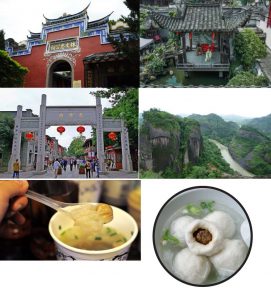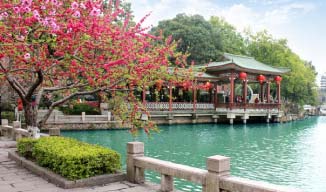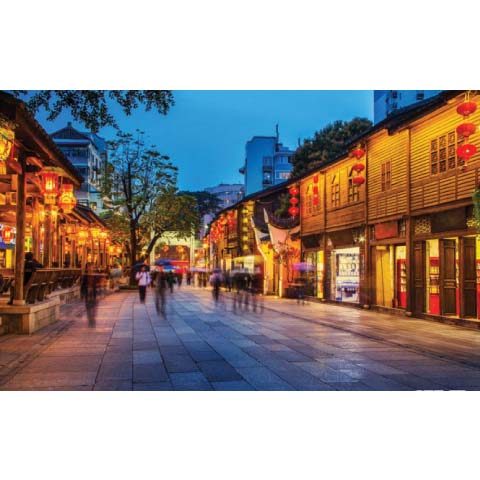
When Tsinoys visit Fujian province in southern China, their destination is usually Xiamen, where their roots are. A little over 200 kilometers to the north, along the coast (the high speed Fuxia train from Xiamen takes less than an hour and a half), is Fuzhou, the provincial capital. Aside from being the political and economic center of the province, Fuzhou (福州) is also a cultural and historic city with over 2,000 years of history.
This rich history reaches over to the modern world in what is perhaps Fuzhou’s most famous tourist attraction, Sanfang Qixiang (三坊七巷, literally, three lanes and seven alleys), a 40-hectare district in the center of the city featuring a cluster of beautiful ancient houses. It is the largest well-preserved historical heritage site in China.
Its lanes and alleys contain hundreds of houses built by wealthy, famous and powerful people during the Ming (1368-1644) and Qing (1644-1911) dynasties.
The Nan Hou Jie (南後街, Southern Street) serves as the central axis, with the three lanes in the west side and the seven alleys in the east. This layout, however, dates further back to the Tang (618-907) and Song (960-1278) dynasties, and is the only place in China with such a layout.
Start your tour of Sanfang Qixiang at Nan Hou Jie, where souvenir and snack shops can be found. Try the famous ruoyan (肉燕, pork dumplings) at the 140-year-old Tongli Ruoyan (同利肉燕) and yuwan (魚丸, fish balls) at Yonghe Yuwan (永和魚丸).
For souvenirs, pick up some traditional handicrafts like lacquerware; the famous Fuzhou lacquered leather suitcases can be ordered at Fu Gong Leather Workshop (福工皮具), but this is a fast-disappearing craft as only a handful of craftsmen still make them. The Sanfang Qixiang Cultural and Creative Center (三坊七巷文創中心) is a good place to shop.
Many of the grand old houses and their gardens have been restored and are open to visitors. Among those not to be missed are the Fujian Folk and Culture Museum (福建民俗博物館, the former Ermei Library) and the Ancestral Hall (林文忠公祠) and Museum of Lin Zexu (林則徐紀念館), the government official who stopped the importation of opium and started the first opium war.
The Water Pavilion Theater (水榭戲台Shui Xie Xi Tai), built in the garden of a mansion in the Qing dynasty, has a suspended stage where opera was performed to entertain guests. Tunnels on the side of the garden feature stairs that lead to an audience area, supposedly reserved for the women.
You can spend a whole day – or two – exploring the many attractions at Sanding Qixiang (although today only two lanes and five alleys remain, as a lane and two alleys have been turned into driveways!), but Fuzhou has many other places to see.
The Fuzhou National Forest Park (福州國家森林公園), bound by mountains on three sides and water on the other, is perfect for nature trippers, with waterfalls, stone carvings and a huge banyan tree that has come to be a sort of symbol of the city.
There are several famous mountains in and around Fuzhou, including Yushan (于山) right in downtown with a restored 10th century pagoda; Shizhu mountain (石竹山) withers bizarre rock formations and beautiful bamboo; Gushan mountain (鼓山, named after a huge rock on the top which sounds like a drum in the wind and rain) which has 300 inscriptions on the cliff face left by ancient literati.

West Lake Park (西湖公園) has drawn painters and writers since ancient times. It is the best preserved classical garden in the city and is known as “the bright pearl of Fuzhou gardens.”
Do not leave Fuzhou without getting some tea, particularly tea from Wuyi Mountain, one of the major tea producing regions not just in China but globally. Among the famous and coveted varieties of tea from Wuyi are Da Hong Pao (大紅袍), Lapsang Souchong
(立山小種), Tie Luo Han (鐡羅漢) and others. When you get back home, a nice cup of Fuzhou tea will rekindle memories of your visit to this remarkable city.
